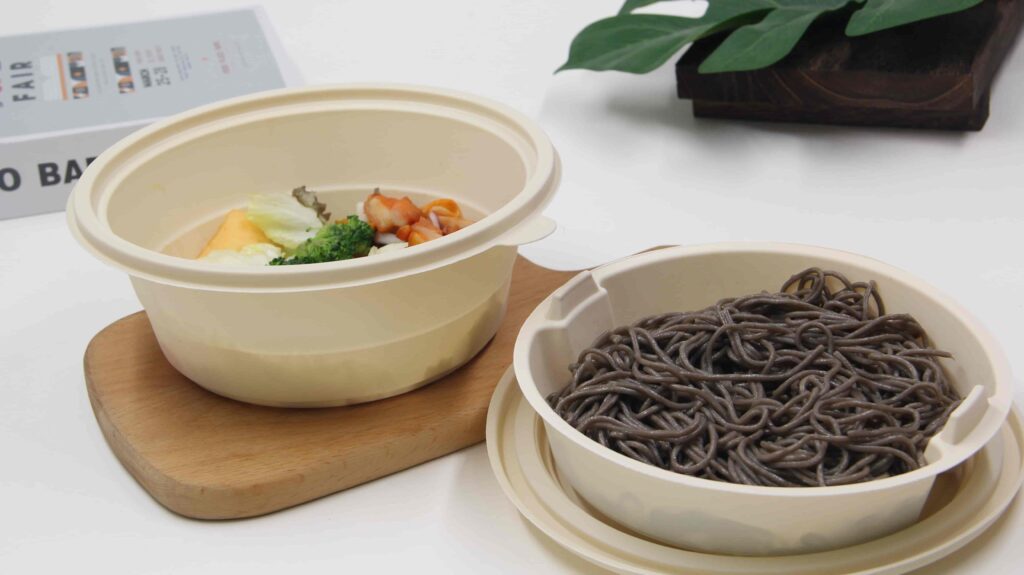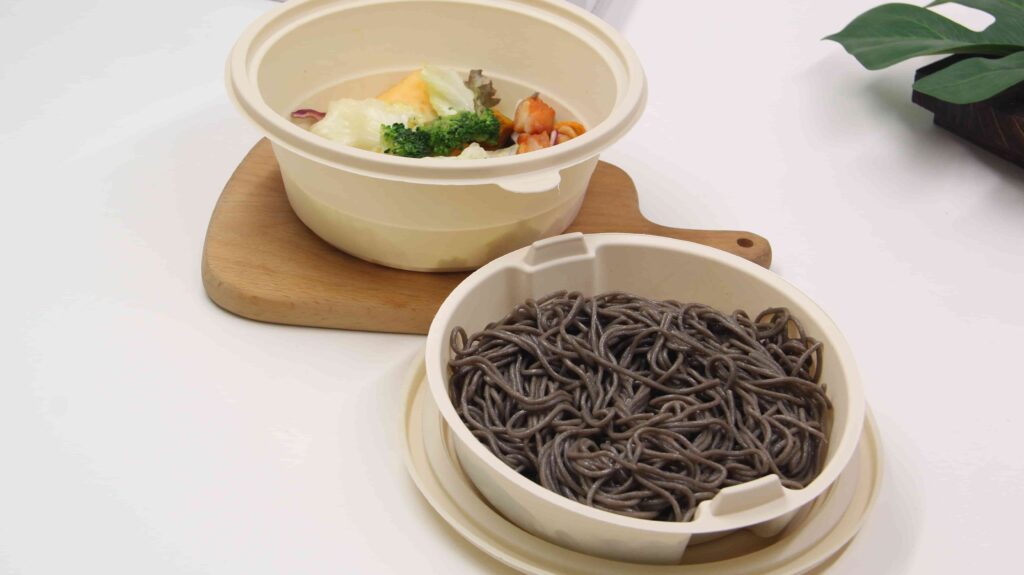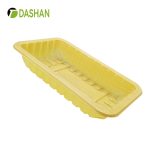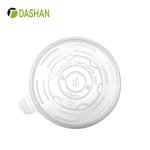Introduction
The food packaging industry is undergoing a major transformation, and one of the most promising innovations is the cornstarch noodle soup bowl with a separation design. Unlike traditional plastic containers, these bowls are eco-friendly, biodegradable, and leak-free, making them ideal for restaurants, takeout services, and food delivery platforms.
What sets them apart is their dual-compartment structure, which keeps soup broth and noodles separate until mealtime. This prevents soggy noodles, ensures freshness, and enhances customer satisfaction. At the same time, the use of cornstarch—a renewable plant-based material—provides a sustainable alternative to single-use plastics, helping businesses reduce their environmental footprint while aligning with global trends in eco-friendly packaging.
What Is a Cornstarch Soup & Noodle Separation Bowl?
A cornstarch separation bowl is a food-grade container crafted from cornstarch biopolymer. Unlike traditional plastic bowls, these containers are:
-
Biodegradable and compostable under proper industrial conditions.
-
Heat-resistant (suitable for hot soup, noodles, and stir-fry).
-
Safe and non-toxic, free from harmful additives like BPA or phthalates.
-
Functional in design, featuring two compartments—one for noodles or solid food, and another for soup or broth.
This dual-compartment design prevents soggy noodles during delivery, offering a superior dining experience even for takeout meals.

Why Use Cornstarch Separation Bowls in Food Packaging?
1. Enhanced Food Quality
By keeping noodles and broth separate, the bowls ensure that the texture of noodles remains springy, not soggy. Consumers enjoy the same quality as if the meal were freshly served in a restaurant.
2. Convenience for Takeout and Delivery
With the global rise of food delivery apps, packaging plays a crucial role in customer satisfaction. Cornstarch bowls make it easier for customers to reheat meals and assemble them just before eating.
3. Eco-Friendly Alternative to Plastic
Traditional plastic packaging contributes to landfill and ocean pollution. In contrast, cornstarch bowls are biodegradable and reduce carbon footprint. Businesses adopting them align with global sustainability goals.
4. Safety & Food Hygiene
Cornstarch-based materials are derived from renewable resources and are safe for direct food contact. They don’t release harmful chemicals even when exposed to high temperatures, unlike certain plastics.
Comparison: Cornstarch Bowls vs. Plastic Bowls
| Feature | Cornstarch Separation Bowl | Plastic Bowl (PP, PET) |
|---|---|---|
| Material Source | Renewable (corn starch) | Petroleum-based |
| Biodegradability | Yes (industrial composting) | No (non-biodegradable) |
| Heat Resistance | Up to 100–120°C | 90–120°C (varies) |
| Safety (toxins, BPA) | Free from harmful additives | May contain chemicals |
| Food Quality (soup/noodle) | Maintains separation | No separation function |
| Consumer Appeal | Eco-friendly, modern | Conventional, outdated |
Applications in Foodservice Industry
1. Noodle Shops & Ramen Restaurants
Japanese ramen, Chinese noodle soups, and Korean naengmyeon all benefit from this packaging. The broth can be packed separately from the noodles to preserve authentic taste.
2. Fast Food Chains
Quick-service restaurants offering soups, pasta, or Asian-style noodle dishes can adopt these bowls for both dine-in takeout and delivery.
3. Meal Prep & Catering Services
For companies preparing lunchboxes or catering large events, cornstarch bowls offer practicality and eco-friendly branding.
4. Airline & Travel Meals
Airline catering increasingly prioritizes lightweight, eco-safe materials. Cornstarch separation bowls reduce single-use plastic waste in flights and train services.

Environmental Benefits
-
Reduction of Plastic Waste – Cornstarch bowls decompose much faster than plastics, typically within months under industrial composting.
-
Lower Carbon Emissions – Production of cornstarch packaging emits fewer greenhouse gases compared to petroleum-based plastic production.
-
Renewable Material – Made from agricultural starch, a byproduct of corn, supporting circular economy initiatives.
-
Compliance with Global Regulations – Many countries in Europe, North America, and Asia are banning single-use plastics. Cornstarch packaging meets these eco-regulations.
Market Trends in Biodegradable Food Packaging
-
Global Growth: The biodegradable packaging market is projected to reach over USD 120 billion by 2030.
-
Consumer Preference: Surveys indicate that 70% of consumers prefer eco-friendly packaging over conventional plastics, even at slightly higher prices.
-
Restaurant Branding: Eco-packaging is not just functional—it strengthens a brand’s identity as sustainable and socially responsible.
Case Study: Food Delivery with Cornstarch Separation Bowls
A noodle delivery chain in Southeast Asia adopted cornstarch separation bowls for its soup noodle menu. The results were:
-
30% increase in repeat orders due to improved food quality.
-
Positive customer reviews emphasizing freshness and taste.
-
Brand recognition for sustainable practices, attracting eco-conscious customers.
Frequently Asked Questions (FAQ)
Q1: Are cornstarch bowls microwave-safe?
Yes, most cornstarch bowls can safely withstand microwaving, making them ideal for reheating meals.
Q2: Do they dissolve in hot soup?
No, cornstarch bowls are engineered for durability. They maintain integrity even with boiling liquids.
Q3: How long does it take to biodegrade?
Typically 3–6 months in industrial composting facilities, depending on conditions.
Q4: Are they more expensive than plastic?
Yes, slightly more expensive, but the long-term benefits (brand reputation, eco-compliance) outweigh the cost.
Q5: Can they be used for cold foods too?
Absolutely. They work well for salads, cold noodles, and desserts as well.
Conclusion
The cornstarch noodle soup bowl with separation design is more than just food packaging—it’s a step toward greener dining and sustainable business practices. With their unique functionality, eco-friendly nature, and ability to enhance the consumer dining experience, these bowls represent the future of food packaging.
Restaurants, food delivery companies, and catering services can all benefit by adopting this innovative solution. As consumer demand for sustainable options grows, businesses that embrace biodegradable cornstarch packaging are not only protecting the environment but also securing a competitive edge in the foodservice market.
References
-
Ellen MacArthur Foundation – The New Plastics Economy: Rethinking the future of plastics
https://ellenmacarthurfoundation.org/the-new-plastics-economy -
European Bioplastics – Bioplastics market data
https://www.european-bioplastics.org/market/ -
Food Packaging Forum – Biodegradable and compostable materials in food packaging
https://www.foodpackagingforum.org/ -
National Geographic – A million bottles a minute: the scourge of plastic waste
https://www.nationalgeographic.com/environment/article/plastic-pollution -
United Nations Environment Programme (UNEP) – Single-use plastics: A roadmap for sustainability
https://www.unep.org/resources/report/single-use-plastics-roadmap-sustainability -
Packaging Europe – Future of sustainable food packaging
https://packagingeurope.com/




